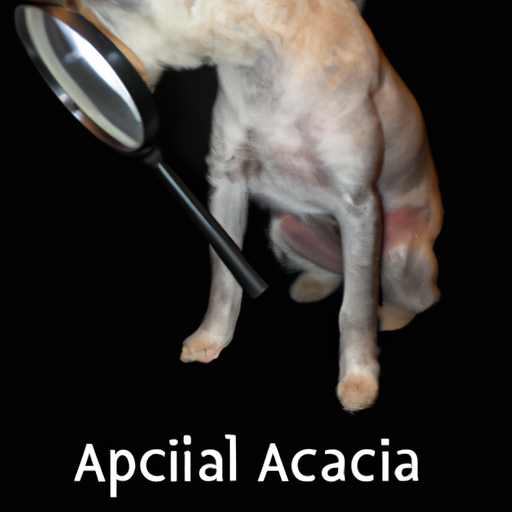If you’re a dog owner, you may be familiar with the term Alopecia. This is a condition that causes hair loss in dogs. It can happen to any breed, at any age, and for various reasons. As a caregiver, it’s essential to understand what Alopecia is, its causes, symptoms, and treatments, to provide the best care for your furry friend.
Table of Contents
- What is Alopecia?
- Causes of Alopecia
- Symptoms of Alopecia
- Diagnosis and Treatment
- Frequently Asked Questions
Key Takeaways
- Alopecia is a condition that causes hair loss in dogs.
- It can be caused by a variety of factors, including hormonal imbalances, parasites, or allergies.
- The most common symptom is hair loss, but other signs can include changes in the skin and behavior.
- Treatment varies based on the underlying cause but typically involves addressing the root cause and providing supportive care.
- Regular check-ups and proper grooming can help prevent some forms of Alopecia in dogs.
What is Alopecia?
Alopecia is a medical term for hair loss. In dogs, this can manifest in several ways, from thinning hair to complete baldness in certain areas. This condition is not life-threatening but can indicate underlying health issues that need to be addressed. It can also affect your dog’s appearance and comfort, causing dry skin, itchiness, and in some cases, secondary infections.
Causes of Alopecia
There are many potential causes of Alopecia in dogs. Some common ones include:
- Hormonal Imbalances: Conditions like hypothyroidism or Cushing’s disease can lead to hair loss.
- Parasites: Fleas, mites, or ticks can cause Alopecia. Your dog may scratch and bite at the area, causing hair to fall out.
- Allergies: Dogs can develop allergies to certain foods, environmental factors, or substances they come into contact with, leading to hair loss.
- Infections or Immune Disorders: Fungal or bacterial infections, as well as autoimmune disorders, can lead to Alopecia.
- Genetic Factors: Some breeds are more prone to certain types of hair loss than others, such as the Doberman Pinscher or the Dachshund.
This article from PetMD provides more detailed information on the causes of Alopecia.
Symptoms of Alopecia
Alopecia in dogs manifests primarily as hair loss. You may notice patches of thin or missing hair, or your dog may lose hair over large areas. Other symptoms can include:
- Changes in the skin, such as redness, inflammation, or scaliness
- Itchiness
- Changes in your dog’s behavior, such as increased licking or scratching
- Secondary infections, such as hot spots or bacterial infections
If you observe these symptoms, it’s crucial to consult with a vet to determine the cause of the hair loss.
Diagnosis and Treatment
Diagnosing Alopecia involves a thorough examination by a vet. They will likely perform a physical examination, ask about your dog’s medical history, and may perform tests such as skin scrapings, blood tests, or biopsies.
The treatment for Alopecia in dogs depends on the underlying cause. If a hormonal imbalance is to blame, medication to correct the imbalance may be prescribed. For parasites, appropriate anti-parasitic treatment will be used. Allergies may be managed by identifying and avoiding the allergen, and medication may be given to manage symptoms. In some cases, special shampoos or topical treatments may be recommended to help soothe the skin and promote hair growth.
Regular grooming and check-ups can help prevent some forms of Alopecia. This includes grooming your dog regularly, using suitable products, and providing a balanced diet.
Frequently Asked Questions
1. Are certain breeds more prone to Alopecia?
Yes, certain breeds such as Doberman Pinschers, Dachshunds, and Chihuahuas have been known to be more susceptible to specific types of Alopecia.
2. Is Alopecia contagious?
No, Alopecia itself is not contagious. However, if the Alopecia is caused by parasites, the parasites can be passed on to other animals.
3. Can Alopecia be cured?
The ability to “cure” Alopecia depends on the underlying cause. If the cause can be treated effectively, the hair loss may be reversible. However, in some cases, the hair loss may be permanent.
4. How can I prevent Alopecia?
Regular check-ups, proper grooming, and a balanced diet can help prevent some forms of Alopecia. If your dog has a condition that predisposes them to hair loss, regular monitoring and treatment can help manage the condition.
Conclusion
Alopecia can be a concerning condition, but with the right knowledge and care, it can be managed effectively. Remember, the best care comes from understanding your dog’s needs and providing them with a loving and nurturing environment. If you suspect your dog has Alopecia, consult with a vet to determine the best course of action.
To learn more about dog health, grooming tips, and more, check out the wealth of information available at OneTopDog.com.



